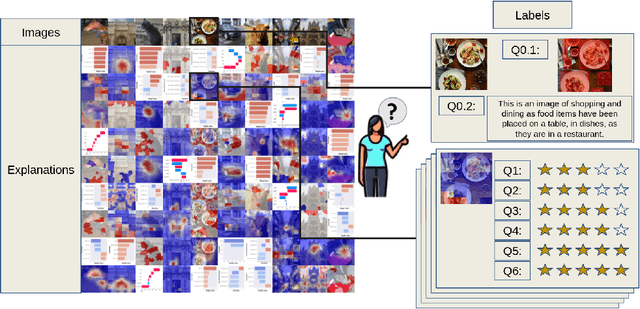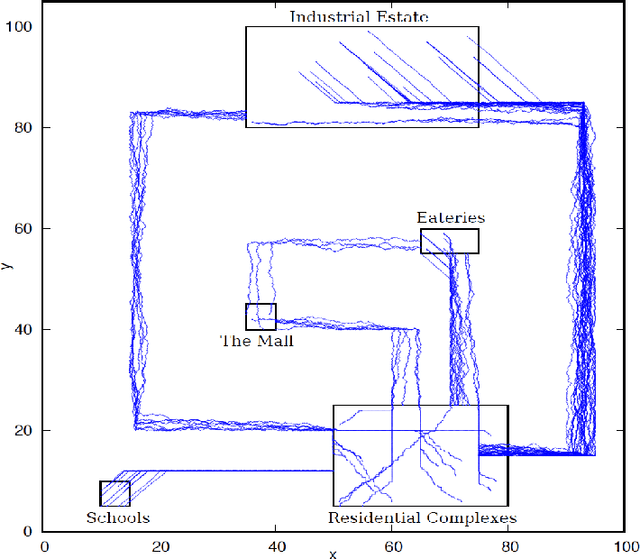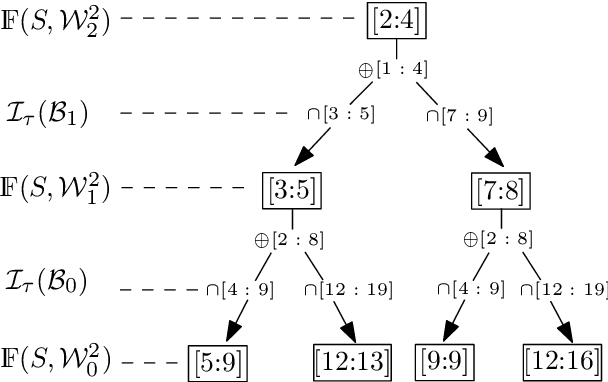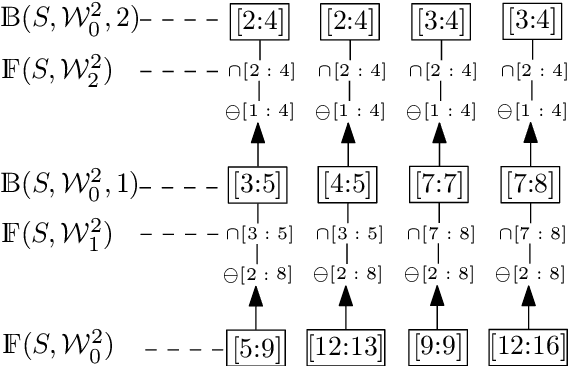Goran Frehse
Explainability for Vision Foundation Models: A Survey
Jan 21, 2025Abstract:As artificial intelligence systems become increasingly integrated into daily life, the field of explainability has gained significant attention. This trend is particularly driven by the complexity of modern AI models and their decision-making processes. The advent of foundation models, characterized by their extensive generalization capabilities and emergent uses, has further complicated this landscape. Foundation models occupy an ambiguous position in the explainability domain: their complexity makes them inherently challenging to interpret, yet they are increasingly leveraged as tools to construct explainable models. In this survey, we explore the intersection of foundation models and eXplainable AI (XAI) in the vision domain. We begin by compiling a comprehensive corpus of papers that bridge these fields. Next, we categorize these works based on their architectural characteristics. We then discuss the challenges faced by current research in integrating XAI within foundation models. Furthermore, we review common evaluation methodologies for these combined approaches. Finally, we present key observations and insights from our survey, offering directions for future research in this rapidly evolving field.
Benchmarking XAI Explanations with Human-Aligned Evaluations
Nov 04, 2024



Abstract:In this paper, we introduce PASTA (Perceptual Assessment System for explanaTion of Artificial intelligence), a novel framework for a human-centric evaluation of XAI techniques in computer vision. Our first key contribution is a human evaluation of XAI explanations on four diverse datasets (COCO, Pascal Parts, Cats Dogs Cars, and MonumAI) which constitutes the first large-scale benchmark dataset for XAI, with annotations at both the image and concept levels. This dataset allows for robust evaluation and comparison across various XAI methods. Our second major contribution is a data-based metric for assessing the interpretability of explanations. It mimics human preferences, based on a database of human evaluations of explanations in the PASTA-dataset. With its dataset and metric, the PASTA framework provides consistent and reliable comparisons between XAI techniques, in a way that is scalable but still aligned with human evaluations. Additionally, our benchmark allows for comparisons between explanations across different modalities, an aspect previously unaddressed. Our findings indicate that humans tend to prefer saliency maps over other explanation types. Moreover, we provide evidence that human assessments show a low correlation with existing XAI metrics that are numerically simulated by probing the model.
CLIP-QDA: An Explainable Concept Bottleneck Model
Nov 30, 2023Abstract:In this paper, we introduce an explainable algorithm designed from a multi-modal foundation model, that performs fast and explainable image classification. Drawing inspiration from CLIP-based Concept Bottleneck Models (CBMs), our method creates a latent space where each neuron is linked to a specific word. Observing that this latent space can be modeled with simple distributions, we use a Mixture of Gaussians (MoG) formalism to enhance the interpretability of this latent space. Then, we introduce CLIP-QDA, a classifier that only uses statistical values to infer labels from the concepts. In addition, this formalism allows for both local and global explanations. These explanations come from the inner design of our architecture, our work is part of a new family of greybox models, combining performances of opaque foundation models and the interpretability of transparent models. Our empirical findings show that in instances where the MoG assumption holds, CLIP-QDA achieves similar accuracy with state-of-the-art methods CBMs. Our explanations compete with existing XAI methods while being faster to compute.
On Double Descent in Reinforcement Learning with LSTD and Random Features
Oct 20, 2023



Abstract:Temporal Difference (TD) algorithms are widely used in Deep Reinforcement Learning (RL). Their performance is heavily influenced by the size of the neural network. While in supervised learning, the regime of over-parameterization and its benefits are well understood, the situation in RL is much less clear. In this paper, we present a theoretical analysis of the influence of network size and $l_2$-regularization on performance. We identify the ratio between the number of parameters and the number of visited states as a crucial factor and define over-parameterization as the regime when it is larger than one. Furthermore, we observe a double descent phenomenon, i.e., a sudden drop in performance around the parameter/state ratio of one. Leveraging random features and the lazy training regime, we study the regularized Least-Square Temporal Difference (LSTD) algorithm in an asymptotic regime, as both the number of parameters and states go to infinity, maintaining a constant ratio. We derive deterministic limits of both the empirical and the true Mean-Square Bellman Error (MSBE) that feature correction terms responsible for the double-descent. Correction terms vanish when the $l_2$-regularization is increased or the number of unvisited states goes to zero. Numerical experiments with synthetic and small real-world environments closely match the theoretical predictions.
Data-driven Reachability using Christoffel Functions and Conformal Prediction
Sep 16, 2023Abstract:An important mathematical tool in the analysis of dynamical systems is the approximation of the reach set, i.e., the set of states reachable after a given time from a given initial state. This set is difficult to compute for complex systems even if the system dynamics are known and given by a system of ordinary differential equations with known coefficients. In practice, parameters are often unknown and mathematical models difficult to obtain. Data-based approaches are promised to avoid these difficulties by estimating the reach set based on a sample of states. If a model is available, this training set can be obtained through numerical simulation. In the absence of a model, real-life observations can be used instead. A recently proposed approach for data-based reach set approximation uses Christoffel functions to approximate the reach set. Under certain assumptions, the approximation is guaranteed to converge to the true solution. In this paper, we improve upon these results by notably improving the sample efficiency and relaxing some of the assumptions by exploiting statistical guarantees from conformal prediction with training and calibration sets. In addition, we exploit an incremental way to compute the Christoffel function to avoid the calibration set while maintaining the statistical convergence guarantees. Furthermore, our approach is robust to outliers in the training and calibration set.
Flexible Mining of Prefix Sequences from Time-Series Traces
May 29, 2019



Abstract:Mining temporal assertions from time-series data using information theory to filter real properties from incidental ones is a practically significant challenge. The problem is complex for continuous or hybrid systems because the degrees of influence on a consequent from a timed-sequence of predicates (called its prefix sequence), varies continuously over dense time intervals. We propose a parameterized method that uses interval arithmetic for flexibly learning prefix sequences having influence on a defined consequent over various time scales and predicates over system variables.
 Add to Chrome
Add to Chrome Add to Firefox
Add to Firefox Add to Edge
Add to Edge